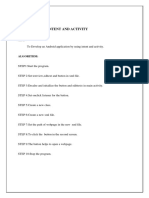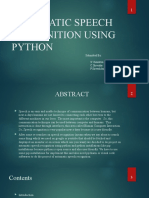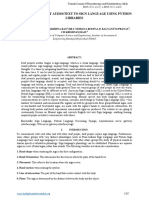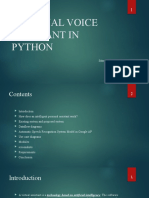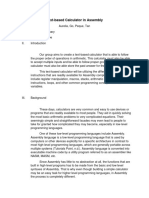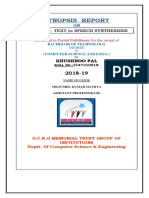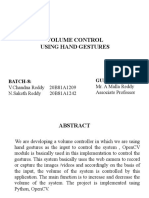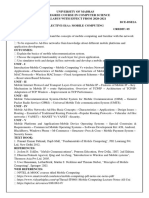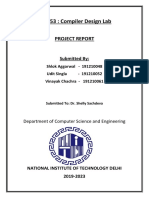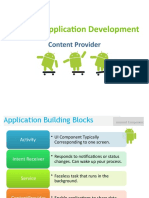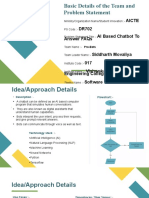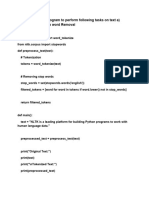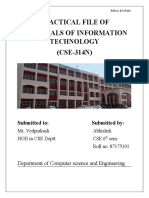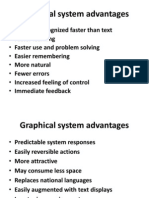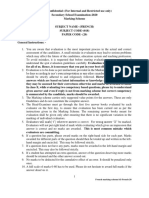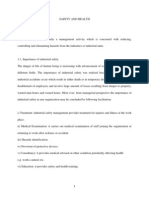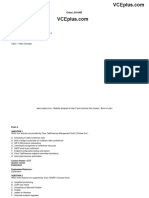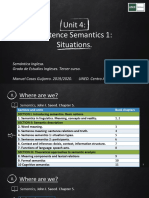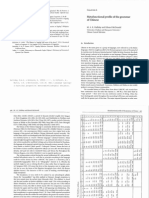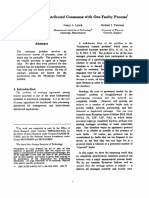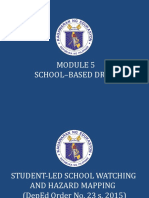100% found this document useful (1 vote)
276 views11 pagesSmart Calculator
The document discusses speaker-independent voice recognition systems and their potential benefits in the workplace. It describes the differences between speaker-dependent and speaker-independent systems, with speaker-independent being more suitable for industrial use as it can recognize any person's voice without training. The document also covers isolated, connected, and continuous speech recognition styles. It then provides an example problem description, modules, and sample programs for a voice-enabled calculator application for visually impaired users.
Uploaded by
veerasolaiyappan vCopyright
© © All Rights Reserved
We take content rights seriously. If you suspect this is your content, claim it here.
Available Formats
Download as DOC, PDF, TXT or read online on Scribd
100% found this document useful (1 vote)
276 views11 pagesSmart Calculator
The document discusses speaker-independent voice recognition systems and their potential benefits in the workplace. It describes the differences between speaker-dependent and speaker-independent systems, with speaker-independent being more suitable for industrial use as it can recognize any person's voice without training. The document also covers isolated, connected, and continuous speech recognition styles. It then provides an example problem description, modules, and sample programs for a voice-enabled calculator application for visually impaired users.
Uploaded by
veerasolaiyappan vCopyright
© © All Rights Reserved
We take content rights seriously. If you suspect this is your content, claim it here.
Available Formats
Download as DOC, PDF, TXT or read online on Scribd
/ 11
You might also like
- No ratings yet1.INTRODUCTION A voice browser is a “device which interprets a (voice) markup language and is capable of generating voice output and/or interpreting voice input,and possibly other input/output modalities." The definition of a voice browser, above, is a broad one.The fact that the system deals with speech is obvious given the first word of the name,but what makes a software system that interacts with the user via speech a "browser"?The information that the system uses (for either domain data or dialog flow) is dynamic and comes somewhere from the Internet. From an end-user's perspective, the impetus is to provide a service similar to what graphical browsers of HTML and related technologies do today, but on devices that are not equipped with full-browsers or even the screens to support them. This situation is only exacerbated by the fact that much of today's content depends on the ability to run scripting languages and 3rd-party pl24 pages


